
Poland facts and history
in brief
Gdansk
Excerpted from Wikipedia, the free encyclopedia.
Gdansk,(Polish; also Kashubian: Gdunsk, German:
Danzig, Latin: Gedania; also other languages) is the
sixth-largest city in Poland, its principal seaport,
and the capital of the Pomeranian Voivodship.
The city lies on the southern coast of the Gdansk Bay
(of the Baltic Sea), in a conurbation with the spa town
of Sopot, the city of Gdynia and suburban communities,
which together form a metropolitan area called the Tricity
with a population of over a million people.
Gdansk is, with a population of 460,524 (mid 2004),
the largest city in the historical province of Eastern
Pomerania.
Gdansk is situated at the mouth of the Motlawa river,
connected to the Leniwka, a branch in the delta of the
Vistula, whose waterway system connects 60% of the area
of Poland, giving the city a unique advantage as the
center of Poland's sea trade.
Historically an important seaport since the 10th century
and subsequently a principal ship-building centre, Gdansk
was a member of the Hanseatic League and the largest
city in Poland until the partitions of the late 18th
century, when the largely German-speaking city became
part of Prussia, and later of the German Empire.
After a period as a free city in the interwar period
(1919-1939), claims to Gdansk became the pretext for
Hitler's attack on Poland which began the Second World
War.
Following the war Gdansk again became part of Poland,
and the German population was largely expelled, making
the city for the first time entirely ethnically Polish.
Today Gdansk remains an important industrial centre
together with the nearby port of Gdynia, developed during
the 1920s as a Polish rival to the unfriendly German-controlled
Free City.
In the 1970s the modern port in Gdansk was developed,
accessible for much bigger ships, including middle sized
tankers.
Origins of the name
The name is thought to be meaning town located on Gdania
river, the original name of the Motlawa branch the city
is situated on.
Like many other European cities, Gdansk has had many
different names throughout its history.
The Polish name is Gdansk and in the local Kashubian
language it is known as Gdunsk.
Due to the city's German heritage the name Danzig is
still used, especially when referring to the city prior
to the Second World War.
The city's Latin name may be given as any of Gedania,
Gedanum or Dantiscum; the variety of Latin names reflects
the influence of the Polish, Kashubian, and German names.
In English the name Gdansk is usually pronounced gadansk.
Historical documents
The name of a settlement was recorded after St. Adalbert's
demise in 997 A.D. as urbs Gyddanyzc and later was written
as Kdanzk (1148), Gdanzc (1188), Gdansk (1236), Danzc
(1263), Danczk (1311, 1399, 1410, 1414?1438), Danczik
(1399, 1410, 1414), Danczig (1414), Gdansk (1454, 1468,
1484), Gdansk (1590), Gdansk (1636) and in Latin documents
Gedanum or Dantiscum.
These early recordings show the Pomeranian name Gdunsk,
the Polish name Gdansk and the German name Danzig.
Alternative spellings from medieval and early modern
documents are Gyddanyzc, Kdansk, Gdanzc, Dantzk, Dantzig,
Dantzigk, Dantiscum and Gedanum.
The official Latin name of Gedanum was used simultaneously.
On special occasions it is also known as The Royal Polish
City of Gdansk; Polish: Królewskie Polskie Miasto
Gdansk, German: Königliche Polnische Stadt Danzig,
Latin: Regia Civitas Polonica Gedanensis, Kashubian:
Królewsczi Polsczi Gard Gdunsk. The Kashubians
prefer the name: Our Capital City Gdansk (=Nasz Stoleczny
Gard Gdunsk) or The Kashubian Capital City Gdansk (=Stoleczny
Kaszëbsczi Gard Gdunsk).
History
According to archeologists, the Gdansk stronghold was
constructed in the 980s by Mieszko I of Poland; however,
the year 997 has in recent years been considered to
be the date of the foundation of the city itself, as
the year in which Saint Adalbert of Prague (sent by
the Polish king Boleslaus the Brave) baptized the inhabitants
of Gdansk (urbs Gyddanyzc).
In the following years Gdansk was the main centre of
a Polish splinter duchy ruled by the dynasty of Dukes
of Pomerania. The most famous of them, Swantipolk II,
granted a local autonomy charter in ca. 1235 to the
city, which had some 2,000 inhabitants.
Gdansk became a flourishing trading city with some 10,000
inhabitants by the year 1308.
In this year it was occupied and demolished by the Teutonic
Knights (the Gdansk massacre of November 13, 1308).
This led to the city's decline and to a series of wars
between the rebellious Knights and the Polish kings,
ending with the Peace of Kalisz in 1343 when the Knights
acknowledged that they would keep Pomerania as "an alm"
from the Polish king.
This left the legal basis of their possession of the
province in some doubt. The agreement permitted the
foundation of the municipality in 1343 and the development
of increased trade in export of grain from Poland via
the Vistula river trading routes.
Gdansk became a full member of the Hanseatic League
by 1361.
When a new war broke out in 1409 and ended with the
Battle of Grunwald (1410) the city accepted the direct
overlordship of the Polish kings, but with the Peace
of Torun (1411) it returned to the Teutonic Knights'
administration.
In 1440 Gdansk participated in the foundation of the
Prussian Union which led to the Thirteen Years War (1454-1466)
and the incorporation of Royal Prussia to the direct
rule of the Polish Crown.
Thanks to the Royal charters granted by the king Casimir
IV the Jagiellonian and the free access to all Polish
markets, Gdansk became a large and rich seaport and
city.
The 16th and 17th centuries were a Golden Age for trade
and culture in Gdansk.
Inhabitants from various ethnic groups (Germans, Poles,
Jews, and the Dutch being the largest) contributed to
Gdansk's identity and rich culture of the period.
The city suffered a slow economic decline due to the
wars in the 18th century, which ended with the Partitions
of Poland from 1772-1795.
Gdansk was annexed by the Kingdom of Prussia in 1793
and, again in 1815, after a short period as the Free
City of Danzig (1807-1815) under Napoleon.
In contrast to the independent period, under the Prussian
administration Gdansk became a relatively unimportant
city dominated by the military garrison and the administration
officials. As part of Prussia, it became part of the
German Empire in 1871.
After World War I, Poland became independent, and the
Poles hoped to receive Gdansk to provide the "free access
to the sea," which they had been promised by the Allies
on the basis of Woodrow Wilson's "Fourteen Points."
However, the city was not placed under full Polish sovereignty,
but was made into the Free City of Danzig, an independent
free city under the auspices of the League of Nations,
governed by its largely German-speaking residents but
with its external affairs largely under Polish control.
Because the German authorities in Gdansk obstructed
Polish trade and restricted Poles from settling in the
city, the Polish government decided to build the nearby
seaport of Gdynia, which in the following years took
the majority of total Polish exports.
Meanwhile, the independent Free City with its surrounding
district, which included the seaside spa of Zoppot (Sopot),
issued its own stamps and currency bearing the legend,
"Freie Stadt Danzig" and symbols of the city's maritime
orientation and history.
Tensions arising from quarrels between Germany and Poland
over control of the Free City served as a pretext for
the German invasion of Poland on September 1, 1939 and
the outbreak of World War II.
The Nazis' capture of the city resulted in its annexation
into Nazi Germany and its incorporation into the Reichsgau
Danzig-Westpreussen.
The city was occupied by Polish and Soviet forces on
March 30, 1945 after a fierce battle with defending
Germans which left 90% of the old city reduced to ruins.
At the Yalta and the Potsdam conferences, Gdansk was
transferred to Poland along with the whole territory
of the Free City.
According to the terms of the Potsdam conference, Germans
remaining in the city were expelled.
Out of the Free City's pre-war population of 385,000,
285,000 lived in exile in Germany after the post-war
migrations were over.
Many Poles impressed with Gdansk's historic prosperity
came to rebuild the city from throughout Poland, especially
from the regions of eastern Poland annexed by the Soviet
Union.
The Old City was rebuilt from its ruins during the 1950s
and 1960s.
Because of the development of its port and 3 major shipyards,
Gdansk was a major shipping and industrial center of
the Communist People's Republic of Poland.
Gdansk was the scene of anti-government demonstrations
which led to the downfall of Poland's communist leader
Wladyslaw Gomulka in December 1970.
Ten years later the Gdansk Shipyard was the birthplace
of the Solidarity trade union movement, whose opposition
to the government led to the end of communist party
rule (1989).
Solidarity's leader Lech Walesa became the Polish president
in 1990.
Today Gdansk remains a major industrial city and shipping
port.
Economy
The city's industrial kaleidoscope is dominated by traditional
lines of shipbuilding, the petrochemical and chemical
industry, and food processing.
The share of more high-tech sectors such as electronics,
telecommunications, IT engineering, or cosmetics and
pharmaceuticals is on the rise.
Amber processing for the local economy is also prominent.
Culture
Gdansk was once an important center of culture.
In the 16th century it hosted Shakespearean theater
on foreign tours.
Currently, there is a Fundation Theatrum Gedanensis
aimed at rebuilding the Shakespeare theater building
on its traditional site in Gdansk.
It is expected that Gdansk will have a permanent English
language theater, as at present it is only an annual
event.
Tourism
The city boasts many fine Hanseatic league buildings.
The St Mary's Church (Marienkirche/Bazylika Mariacka),
a municipal church built in Gdansk in the 15th century,
is one of the largest brick churches in the world.
On the Motlawa river the museum ship SS Soldek is anchored.
Politics of Gdansk Contemporary Gdansk is the
capital of the Pomeranian province and is one of the
major centres of economic and administrative life in
Poland. Many important agencies of the state and local
government levels have their main offices here.
Education
There are 10 universities in Gdansk, as well many elementary,
high and tertiary and technical educational institutions.
External links

This page was retrieved and condensed from
(http://en.wikipedia.org/wiki/Gdansk) in July, 2005
All text is available under the terms of the GNU Free
Documentation License.

Gdansk was the second
Polish city Hui Chin and I visited during our 2005 trip
in Europe.
Very interesting and colourful city and history.

Some of my photos of Gdansk.
You can click on
these photos for an enlargement
 |
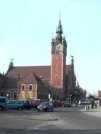 |
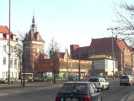 |
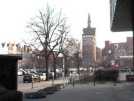 |
| Gdansk |
Gdansk |
Gdansk |
Gdansk |
 |
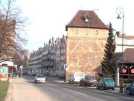 |
 |
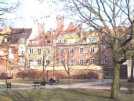 |
| Gdansk |
Gdansk |
Gdansk |
Gdansk |
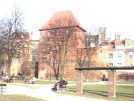 |
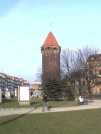 |
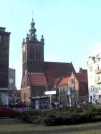 |
 |
| Gdansk |
Gdansk |
Gdansk |
Gdansk |
 |
 |
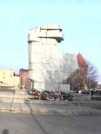 |
 |
| Gdansk |
Gdansk |
Gdansk |
Gdansk |
 |
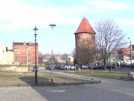 |
 |
 |
| Gdansk |
Gdansk |
Gdansk |
Gdansk |
 |
 |
 |
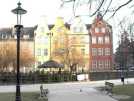 |
| Gdansk |
Gdansk |
Gdansk |
Gdansk |
Gdansk buses
 |
| Gdansk buses |
Gdansk trams
 |
| Gdansk trams |
Gdansk trains
 |
 |
 |
 |
| Gdansk trains |
Gdansk trains |
Gdansk trains |
Gdansk trains |
 |
 |
| Gdansk trains |
Gdansk trains |

Site
Index
Back to Top
Photos Index
Thanks for coming, I hope you
have enjoyed it, will recommend
it to your friends, and will come
back later to see my site developing
and expanding.
I'm trying to make my pages
enjoyable and trouble free for everyone,
please let me know of any mistakes
or trouble with links, so I can
fix any problem as soon as possible.
These pages are best viewed with monitor
resolution set at 640x480 and kept simple
on purpose so everyone can enjoy them
across all media and platforms.
Thank you.
You can e-mail me at
Webmaster

|